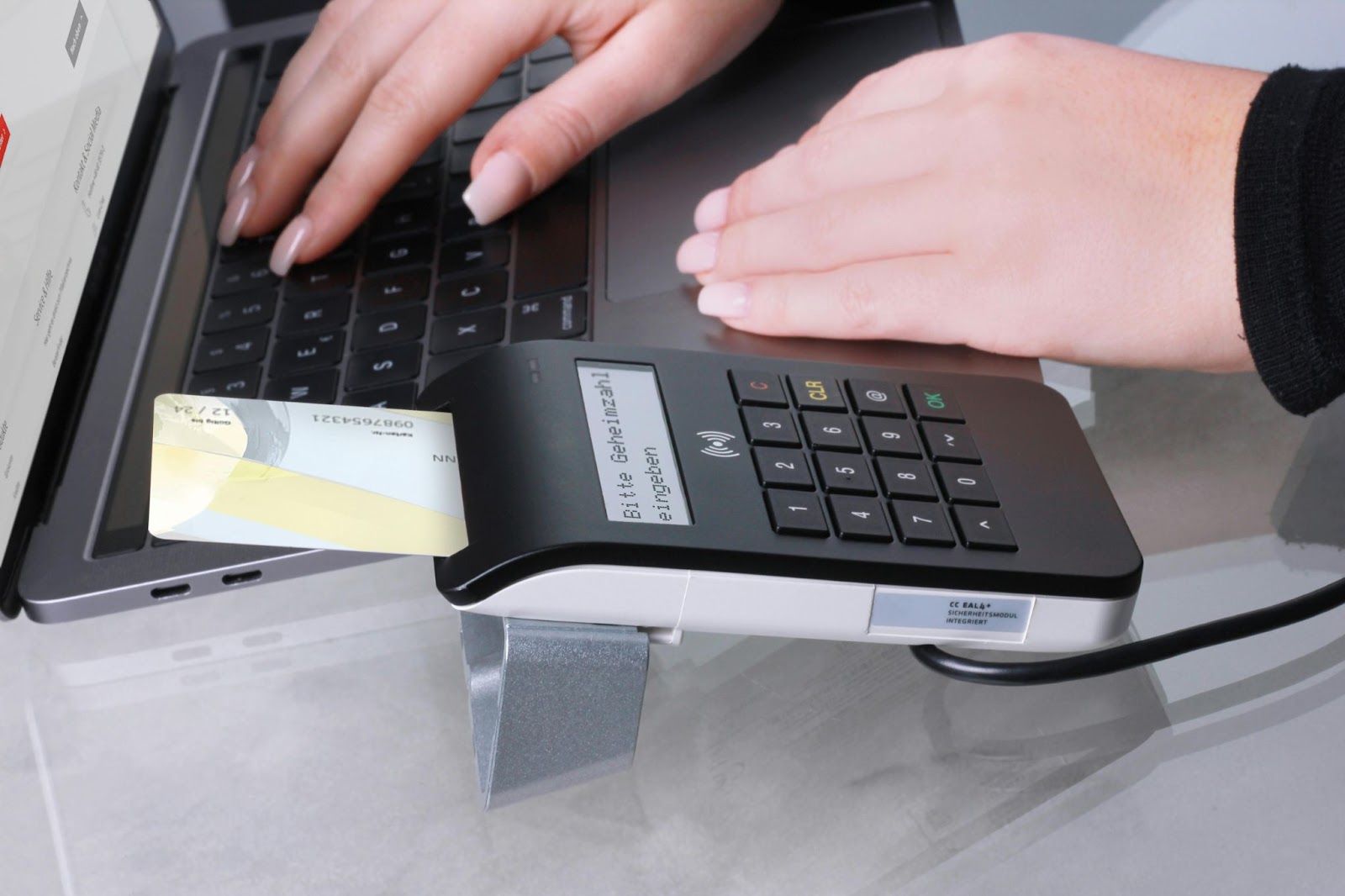Safari Password Manager—How Secure Is It?
Safari, Apple's web browser, is renowned for its speed, energy efficiency, and seamless integration with the Apple ecosystem[1]. As part of this ecosystem, Safari incorporates a built-in password manager that relies on iCloud Keychain to store and autofill passwords, enhancing the security and convenience of online browsing.
This article explores Safari Password Manager, highlighting its integration with other Apple services. If you want to boost your online security further, this article will also explain how to use virtual cards to protect your sensitive financial information from potential cybercriminals.

An Overview of Safari Password Manager
We'll examine Safari Password Manager across two essential categories:
- Security measures
- Password management features
Security Measures
Safari Password Manager uses iCloud Keychain for storing and syncing passwords[2]. It comes with several security measures to protect user data and boost online privacy, including:
- End-to-end encryption—All data is protected by two different AES-256-GCM encryption keys to reduce the risk of unauthorized access to the user's credentials[2].
- Access control lists (ACLs)—iCloud Keychain can use specific accessibility requirements, which include biometric authentication methods (Face ID or Touch ID), minimizing the risk of password theft. These requirements can also include specific conditions, such as a Face ID that hasn't changed since its addition[2].
- Secure Enclave—All passwords, encryption keys, and ACLs are secured within a component that is isolated from the rest of the Apple system, increasing the level of security[3].
- Password Monitoring—This security measure involves matching users' saved passwords against those known to be exposed in data breaches. If any password is leaked, the user is instantly notified[4].
Password Management Features
Thanks to Safari Password Manager's integration with iCloud Keychain, users get access to comprehensive features that simplify password management, such as:
- Airdrop—This feature allows users to share their passwords with other iCloud Keychain users. Passwords sent this way are also encrypted, increasing their security in transit[5][6].
- AutoFill—With AutoFill, users can easily fill in login credentials for websites and apps, which saves time and eliminates the hassle of manually entering passwords[7]. The feature also allows users to fill in their previously saved credit card numbers, including the security codes[8].
- Password generator—This feature automatically creates strong, unique passwords when signing up for online accounts[9].
- Import passwords—The password manager allows users to import passwords. However, the export of passwords is not yet available[10].
- Cross-device sync—Users can sync passwords across their Apple devices, ensuring that their login information is always accessible and up-to-date[11].
How To Use Safari Password Manager

To fully leverage Safari Password Manager's capabilities, we'll explore:
- How to access and edit passwords in Safari password manager
- How to sync passwords on different devices
How To Access and Edit Passwords in Safari Password Manager
To access and manage saved passwords in Safari, follow these steps[12]:
- Open Safari
- Click on the Safari menu, then choose Preferences (or Settings)
- Select the Passwords tab
- Sign in with Touch ID or your user account password
- To see a password, select a website, and click Show Details
- To delete a password, click Delete Password
- To update a password, click Edit, make changes, and then click Save
How To Sync Passwords on Different Devices
To keep passwords synchronized across your Apple devices, ensure that iCloud Keychain is enabled on each device. The specific steps to enable iCloud Keychain differ based on whether you are using an iPhone, iPad, or Mac. Refer to the table below for specific instructions[11]:
Third-Party Password Managers That Have Browser Extensions for Safari
Even though Safari's built-in password manager offers robust features, some users may seek additional functionality or cross-platform compatibility provided by third-party password managers. Five notable options are:
1Password
1Password offers browser extensions for several platforms, including:
- Safari
- Chrome
- Edge
- Firefox
- Brave
The company employs 256-bit AES encryption to store passwords securely, and the app can be used as a two-factor authenticator. The password manager allows secure password sharing among trusted users and includes a password generator for creating strong, unique passwords.
Bitwarden
Bitwarden features an open-source, audited codebase and employs end-to-end encryption with a zero-knowledge architecture to ensure that only the user has access to their data. The password manager offers cross-platform compatibility and a secure vault for storing sensitive information, including notes and credit card details.
LastPass
LastPass offers a balance of functionality and simplicity. Its key security features include:
- AES-256 encryption for data protection
- Multi-factor authentication (MFA) via SMS codes, authentication apps, and biometric authentication
LastPass also offers secure cloud storage, a password generator, secure password sharing, emergency access, and an autofill feature.
Dashlane
Dashlane delivers extensive features designed to improve security and user convenience. It offers browser extensions for:
- Safari
- Chrome and Chromium browsers
- Firefox
- Microsoft Edge
The service uses AES-256 encryption to store passwords securely and provides Dark Web Monitoring to alert users of potential data breaches involving their accounts. Dashlane also offers a VPN add-on for premium users and a digital wallet for securely storing and managing payment information.
Keeper
Keeper uses a zero-knowledge security model to ensure only the user can access their information. It also supports biometric login to boost privacy, and it includes a password vault that offers secure file storage and the ability to record and share encrypted files.

Consider Additional Safeguards Against Potential Data Breaches
While password managers offer the convenience of securely storing passwords and payment card numbers, the safety of that information is not guaranteed once you share your details with an online vendor. If the merchant's servers become compromised, your financial details could be exposed.
To protect your sensitive information against potential data breaches, consider using virtual cards for online transactions. These cards are connected to a real funding source but come with random card numbers you can use at checkout. This way, your actual card numbers are never shared with the merchant and are protected in case a merchant’s database suffers a cyber attack.
While some banks offer virtual cards to their customers, consider a dedicated virtual card provider like Privacy for advanced customization options and industry-grade security.
Enjoy Safer Online Transactions With Privacy Virtual Cards
Trusted by over 250,000 users, Privacy offers a secure and efficient way to manage online transactions. By linking your bank account or debit card to a Privacy account, you can generate virtual cards with unique numbers, expiration dates, and security codes, which you can use instead of your real payment card details.
As a PCI-DSS-compliant company, Privacy uses robust security measures to protect user data. For instance, AES-256 encryption is used to secure data, reducing the risk of exposure. The service provider also enables two-factor authentication (2FA), which helps protect your Privacy account from unauthorized access.
You also receive transaction alerts when your Privacy Cards are used, allowing you to spot and report potentially unusual activity promptly. If you dispute a transaction, Privacy conducts a thorough investigation and treats your report the same way a bank or other financial institution would.
Privacy Card Types and Features
Privacy offers three types of virtual cards:
- Single-Use Cards—These cards are intended for one-time transactions, and they deactivate shortly after use. Even if hackers manage to steal the card, they will not be able to use it.
- Merchant-Locked Cards—These cards become "locked" to the first vendor you use them at and are not accepted elsewhere, reducing the risk of unauthorized use by a third party. They are ideal for recurring purchases, such as bills and subscriptions.
- Category-Locked Cards—These cards are "locked" to specific merchant categories, such as travel or retail. They are ideal for budgeting and allowances.
You can pause, close, and set limits on your Privacy Cards without affecting the funding source. Pausing and closing the cards prevents any further charges. If you set a limit on a Privacy Card, Privacy will block any transaction attempt that goes above the defined limit, protecting you from unannounced price hikes and hidden fees.

Privacy—Convenient Shopping
Privacy offers several features to make online shopping smooth. Integration with 1Password allows you to manage your Privacy Cards directly within the 1Password browser extension, simplifying checkout processes.
The Privacy App, available on Android or iOS, provides an easy way to manage your cards, receive alerts, and track your transactions on the go.
The Privacy Browser Extension—available for Edge, Chrome, Firefox, Safari, and Safari for iOS—integrates card management directly into your browsing experience, which makes online transactions effortless.
Getting Started With Privacy
To join Privacy, follow four steps:
- Register
- Complete the KYC process to verify your identity
- Connect your debit card or bank account to fund your Privacy account
- Request and generate your first virtual card
Privacy has four monthly plans. Refer to the table below to find out which offering best suits your needs and budget:
References
[1] Apple. https://www.apple.com/safari/, Sourced August 07, 2024.
[2] Apple. https://support.apple.com/en-us/guide/security/secb0694df1a/web, Sourced August 07, 2024.
[3] Apple. https://support.apple.com/en-ke/guide/security/sec59b0b31ff/web, Sourced August 07, 2024.
[4] Apple. https://support.apple.com/guide/security/password-monitoring-sec78e79fc3b/web, Sourced August 07,
[5] Apple. https://support.apple.com/guide/security/airdrop-security-sec2261183f4/1/web/1, Sourced August 07, 2024.
[6] Apple. https://support.apple.com/guide/security/sending-passwords-sec8839a8de2/1/web/1, Sourced August 07, 2024.
[7] Apple. https://support.apple.com/en-ke/guide/safari/ibrwf71ba236/mac, Sourced August 07, 2024.
[8] Apple. https://support.apple.com/en-us/guide/safari/ibrw1103/mac, Sourced August 07, 2024.
[9] Apple. https://support.apple.com/en-us/guide/security/secc84c811c4/web, Sourced August 07, 2024.
[10] Apple. https://support.apple.com/en-ke/guide/keychain-access/kyca35961/mac, Sourced August 07, 2024.
[11] Apple. https://support.apple.com/en-us/109016, Sourced August 07, 2024.
[12] Apple. https://support.apple.com/en-us/105115, Sourced August 07, 2024.
